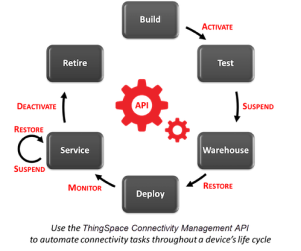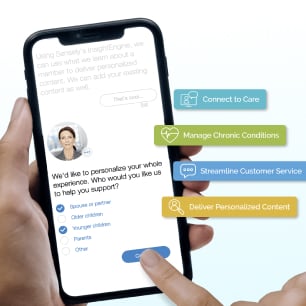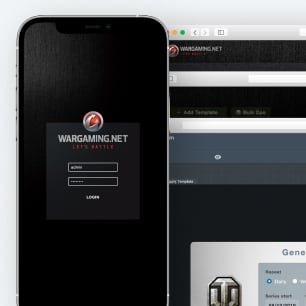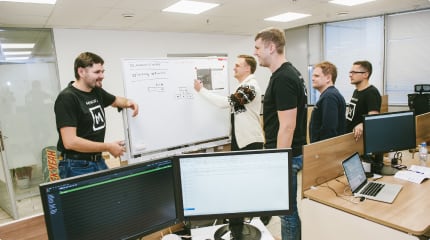A software development company and IT consultancy under one roof
At the intersection of passion and precision, SiliconMint is a software development company headquartered in San Francisco that offers software engineering and IT consulting services to deliver practical and enduring value.
Dedicated software development teams
High performance engineering, redefined
We differ from other software development companies by the deep technical expertise of our staff. Our dedicated software engineering teams work on complex systems at scale.
Doing it right, the first time around
IT advisory services from strategy to implementation
Unlike other software development companies, we combine software development with an IT consultancy under one roof. Partnering with our clients to deliver meaningful impact from our offices in San Francisco and NYC.
Deadline is tomorrow?
Build software 12x faster with our no-code platform
Based in San Francisco, we're a software company that values efficient application development. That's why we created a no-code application development platform to rapidly craft powerful digital experiences.
Who we are
Craftsmen. Builders. Makers of IT strategies large and small. Compilers of high performance engineering teams. We are all these things, united by a passion for the craft of programming itself.
From silicon wafers to cloud architectures, we leverage our understanding of the what, the why, and the how to deliver solutions, strategies, and systems for our customers at the highest velocity possible.
About us
What makes us different
Our leadership team
What makes us different
Our leadership team
2012
founding
year
year
12M
consumers
served
served
208M
IoT devices
connected
connected
100s
IT strategies
implemented
implemented
6 years
shipping MintData
no-code platform
no-code platform
43
Fortune 500
enterprises served
enterprises served
Client feedback

Leon Hounshell
Chief Technology Officer
Verizon Business
Using SiliconMint's AI engine and their engineering team was a great decision for us. They built the core foundation of our ThingSpace IoT platform on time and within budget, helping us serve millions of customers across the country. I would highly recommend the SiliconMint team for their drive and dedication.

Naohisa Takahashi
Manager, Global Business Development
Yahoo Japan
SiliconMint developed for us an intelligent solution to review and approve ad requests—a process which had previously been manual and slow. With the SiliconMint-built solution, we were able to dramatically accelerate the ad approval process without hiring thousands of QC personnel.

Steve Grice
Head of Technology
Royal Bank of Scotland
SiliconMint built a real-time fraud detection system for us in a record period of time, with precision and recall that rivals the best in the industry. I was pleasantly impressed by their passion, dedication, and attention to detail in how they approached software development, driving excellence and speed within our organisation.

Leonid Zhukov
Partner and Associate Director, Data Science
Boston Consulting Group
I'm always impressed by the technical depth & breadth of SiliconMint's engineering team and the passion they bring to our projects. We've worked with them on distributed systems, data science projects, and a predictive maintenance system for the oil and gas sector.

Banipal Shahbaz
Director of Engineering
WhiteHat Security, Inc.
We tasked SiliconMint with an insurmountable challenge—build a static code analyzer to detect vulnerabilities for the dynamic language of JavaScript (ES3, ES5). I was pleasantly surprised when they performed not only groundbreaking research but also delivered a working system in just over a year.
Motif Investing
SiliconMint delivered core parts of our real-time trading platform, including a big data system that analyzes over a million stock market messages per second. I would highly recommend SiliconMint for their dedication and passion for doing things right the first time around.

Andrew Foss
CTO
ActMobile Networks
The SiliconMint team blew me away—they ended up building the first version of our MobileVPN product, both the cloud and mobile device portions. Today, it's one of the top 3 MobileVPN systems used worldwide, and I'm incredibly proud of having worked with SiliconMint.

Aaron Nathan
CEO
Point One Navigation
SiliconMint helped us make the impossible possible—writing a computer vision system that identifies geometry in 3D space from a single video camera feed. I was astounded by their technical knowledge and how it's coupled with an unbridled passion for moving quickly, yet with precision.
Hightail, Inc.
We were impressed by SiliconMint's engineering prowess in building our distributed file system cloud and core user experience. SiliconMint was one of the few vendors in my memory who stood out for their speed, reliability and passion for how they approach their work.
Strategic services
The strategic services of our custom software development company focus on the why and the how, while our implementation services focus on getting the what done as efficiently as possible with high craftsmanship and quality.
Cloud services
Lessons learned from thousands of deployments across hundreds of projects yield one thing—the experience and know-how to design the "right" architecture is always a tradeoff between speed, cost, efficiency, in-house skill sets, product roadmaps, and a host of other factors. An NP-hard problem, we thrive on delivering optimal results in the field of cloud architecture, design, implementation, monitoring, training, and support.
Implementation services
Dedicated teams
Deliver scalable digital solutions with a dedicated team. Flex team size to deliver faster outcomes in a cost efficient way.
Hire dedicated developers
Hire dedicated developers
Product design, UI/UX
Leverage our product design expertise. We'll work with your organization to craft the definition for digital experiences across desktop, web, mobile, and TV.
QA & testing strategy
Utilize our quality assurance services for everything from test plan strategy to implementation. Ensure quality at every stage of development.
IT staff augmentation
Harness the power of global talent. Augment your software development staff. Bridge skill set gaps. Ship software faster.
IT staff augmentation
IT staff augmentation
The need for  speed
speed
Rapid software development. Deliver applications up to 12X faster with MintData.
Use our no-code platform to craft beautiful digital experiences and business workflow solutions.
Use our no-code platform to craft beautiful digital experiences and business workflow solutions.
No-code app builder
Deadline is tomorrow?
We're no stranger to working on tight deadlines.
This is such a common aspect of our work that we've created MintData, a no-code platform, to help in this journey.
MintData empowers organizations to rapidly create rich, full-featured applications in a fraction of the time. Create UIs and logic of any complexity, set up API integrations, and connect to your existing CRM or ERP systems with ease.
Learn moreThis is such a common aspect of our work that we've created MintData, a no-code platform, to help in this journey.
MintData empowers organizations to rapidly create rich, full-featured applications in a fraction of the time. Create UIs and logic of any complexity, set up API integrations, and connect to your existing CRM or ERP systems with ease.

Verizon Business

Backbone for Verizon's residential IoT platform to provide optimized energy usage, security monitoring services, and remote control of IP-enabled devices within the home.

Yahoo Japan

AI-powered ad approval system that increased the velocity of ads going live in production by 1,600%.

Royal Bank of Scotland

Real-time lending system for the UK market, providing unparalleled access to capital for a wide spectrum of the local population.


Sense.ly

IT advisory services on scalable cloud architecture and robust telemedicine protocols.

AcademixDirect

Distributed crawler system for the collection of data to optimize the lead generation process for the educational sector.


Goldman Sachs

Real-time trading platform with robust, balanced portfolio management, trade execution, and alarm notifications.


Wargaming

A new mechanism for building a tournament management system for tank battles within World of Tanks worldwide.


Milaha

A new procurement system that optimizes document workflows around existing processes, expediting purchases while increasing the efficiency of deployed capital.

Point One Navigation

R&D on a next-generation computer vision algorithm for self-driving vehicles that relies on a single, mono camera and civilian GPS signals.

Boston Consulting Group

IT advisory services for constructing a large-scale sensor collection and analysis system for offshore drilling platforms.

Play Telecom

A deep packet inspection system to provide loyalty offers in real-time in response to end-user events within mobile applications.


Orange

IT advisory services and associated R&D on voice-driven interfaces that control various devices within industrial, commercial, and residential settings.
IoT
AdTech
Fintech
Healthcare
Education / Ed-Tech
Banking / Insurance
Gaming / MMO
Logistics
Transportation
Oil & Gas
Telecom
Partnership with a local food bank
Making an impact in our local communities is important to us. In 2021, we partnered with a local food bank to provide meals and clothing for those in need.
The events occur on a regular basis and are open to all who come on a given day.
Corporate social responsibilityThe events occur on a regular basis and are open to all who come on a given day.
Enduring knowledge for higher ed
In a hackathon organized by Finastra, we helped high school students develop their software engineering and design skills using the MintData no-code application development platform. The teams using MintData won 1st and 2nd place in the contest.
Higher-ed initiativesSiliconMint STEM scholarship
A scholarship to help college students cover their educational expenses, we award a $2,000 grant to the most qualified students in the fields of science, technology, engineering, and mathematics (STEM). Applications are now open.
Scholarship details

Let's work together
Attach files
Send me an NDA
Attach files
or drag & drop files here
Send me a SiliconMint NDA
Send
What is custom software development?
Custom software development is the process of designing, developing, deploying, and maintaining software solutions for specific users or organizations. Unlike off-the-shelf software, custom software development targets a narrow set of requirements specific to each client's business needs.
Like no other software company, our custom software development company offers high-performance engineering teams with the right attitude to help you build quality bespoke software solutions.
Like no other software company, our custom software development company offers high-performance engineering teams with the right attitude to help you build quality bespoke software solutions.
What are the benefits of custom software development?
There are numerous benefits of custom software development:
- Efficient. Custom software is designed by a custom software development company to meet clients' unique requirements in the most efficient way.
- Flexibility. Clients can add features during or after custom software development.
- Lower costs. Because of better efficiency and productivity of custom-built software, the total cost of ownership in the long term can be much lower compared to off-the-shelf software solutions.
- Maximum protection against security threats. With custom software development, you get to choose the security technology or protocol that provides the maximum security of your solution.
- Scalability. The potential growth of your business can be accounted for during custom software development. As your business grows, the software can scale with it.
- Integration. Custom software solutions can be built to integrate with existing and legacy systems, which can be much cheaper than getting packaged software solutions to operate with the existing IT landscape.
- Profitability. With custom software development, the organization that owns custom software can make money by selling the software to other businesses.
What are some famous examples of custom software?
Custom software development enables companies to increase cost-efficiency and profitability by leveraging customised tools, original ideas, and tailor-made strategies. Here are some examples of successful companies capitalizing on bespoke software development:
- Amazon leverages bespoke software development to conquer the eCommerce realm. The custom software solution collects data on consumer preferences while also creating a secure and hassle-free online shopping experience.
- Uber takes advantage of custom software development to outperform the competition. The famous player in the ride-hailing industry uses a custom-built application to create a seamless experience for passengers and drivers.
- McDonalds uses a custom self-order application to stay competitive in the market. The self-order kiosks allow customers to create their own burgers from nearly 30 ingredients.
How to choose the right custom software development company (software agency)?
In your search for a custom software development company (also known as a software agency or simply an agency), look for the following qualities:
- Extensive industry experience and a good track record. Evaluate the software company's portfolio and references.
- Deep technical expertise in the tasks you're outsourcing to the software company.
- Brilliant communication. Things to assess: English proficiency, time-zone difference, Internet connection, and cultural differences.
- Attention to detail. The custom software development company's staff should not be afraid to ask questions to understand your needs and requirements.
- Desire to do it right for the long haul. A good custom software development company's staff think of the long-term impact and possible risks.
- No fear of raising objections. A good custom software development company's staff are not afraid to oppose when they see solutions that may present issues in the future.
- Highly technical team leads. A good software company will provide excellent team leads who have a strong programming background. The team leads combine a software engineer's role with that of a business analyst, project manager, and development manager to ensure timely delivery from the development team and efficient communication with stakeholders at the client organization.
- Software development and IT consulting services under one roof. A vendor that combines the roles of a consulting and software development company helps clients improve their ways of working, reduce maintenance costs, and deliver quality software solutions at a higher velocity.
As a digital transformation consultancy and software agency, SiliconMint offers IT consulting services to- Analyze clients' work processes & technology choices and identify issues & bottlenecks
- Create an actionable plan to resolve the found issues
Unlike many software development companies, at SiliconMint we offer highly experienced software engineering teams who love their work and have a passion for the craft of programming.
Additionally, we created a no-code application development platform to rapidly build powerful software solutions. The MintData development platform allows users with no software development experience to create business-critical software without writing any code.
What is a digital transformation consultancy?
A digital transformation consultancy (otherwise known as an IT consultancy) is a firm that engages with their clients to help them formulate their IT strategy and implement it to enhance their performance and solve their business objectives. A good digital transformation consultancy also provides development services (high-performance software engineering teams) to implement the necessary changes and solutions. SiliconMint is a digital transformation consultancy and software development company under one roof.
What is the software development life cycle?
The software development life cycle (SDLC) is a sequence of steps used by a software development company to design, build, test, and deploy software.
The two main SDLC models many software development companies use are Waterfall and Agile.
The software development company that leverages the Waterfall software development cycle follows a specific sequence of phases. Each phase below must be fully completed by the software development company before the next step is started:
A sprint workflow follows these steps:
The two main SDLC models many software development companies use are Waterfall and Agile.
The software development company that leverages the Waterfall software development cycle follows a specific sequence of phases. Each phase below must be fully completed by the software development company before the next step is started:
- System and software requirements. The software development team gathers and documents requirements.
- Analysis. The team determines business requirements and current ways of working.
- Design. The software development team crafts the software architecture.
- Coding. The software development team creates unit tests, integrating modules according to the determined software architecture.
- Testing/verification. The QA engineers from the software development team perform testing of the software system-wide (integration testing, system testing, user acceptance testing).
- Operations. The software development team performs installation, migration, support, and maintenance of the finished software product.
A sprint workflow follows these steps:
- Requirements. The software development team defines requirements based on discussions with stakeholders.
- Development. Based on the requirements, the team designs and develops software.
- Testing. The software development team performs QA activities to ensure the software is free of bugs, has no issues when interacting with other parts of the system, and the integrated software solution works as expected.
- Delivery. The software development team integrates and deploys the software into a staging or production environment and provides internal and external training on software usage when needed.
- Feedback. The software development team reviews progress toward requirements, gets feedback from stakeholders, and makes suggestions on how to resolve the found issues.
How much do you charge for software development?
Our extensive experience as a software company and a digital transformation consultancy allows us to provide accurate and competitive estimates for software development and IT consulting projects. Our dedicated software development teams outpace the competition by delivering higher quality and performance at a lower total cost of ownership. Contact us for more information.
Who owns the intellectual property (IP) rights?
When clients outsource software development to our custom software development company, we ensure all IP rights are transferred to our clients upon project completion.

Dedicated development teams, the tell-all guide
Discover the secrets behind what it takes to take advantage of high performance software development teams. Deliver faster outcomes by harnessing the power of global talent.

No-code MintData platform 3.0 release
World's most advanced no-code application development platform is now available for self-service access.
Create powerful applications in collaboration with your teammates in real time.
Create powerful applications in collaboration with your teammates in real time.

Real-time lending system, 3B in loans originated
With 99% response time latency below 100 milliseconds, the loan origination and servicing system rebuilt by our software development team positively impacts over 2 million customers nowadays.



